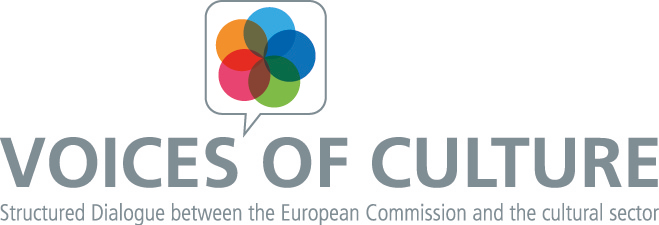[fusion_builder_container hundred_percent=”yes” equal_height_columns=”yes” hide_on_mobile=”small-visibility,medium-visibility,large-visibility” id=”Theme-container” background_position=”center center” background_repeat=”no-repeat” fade=”no” background_parallax=”none” enable_mobile=”no” parallax_speed=”0.3″ video_aspect_ratio=”16:9″ video_loop=”yes” video_mute=”yes” border_style=”solid” padding_right=”0px” padding_left=”0px”][fusion_builder_row][fusion_builder_column type=”1_4″ layout=”1_4″ spacing=”” center_content=”no” hover_type=”none” link=”” min_height=”” hide_on_mobile=”small-visibility,medium-visibility,large-visibility” class=”Color-column-2″ id=”Color-column” background_color=”” background_image=”” background_position=”left top” undefined=”” background_repeat=”no-repeat” border_size=”0″ border_color=”” border_style=”solid” border_position=”all” padding_top=”0px” padding_right=”30px” padding_bottom=”0px” padding_left=”30px” margin_top=”” margin_bottom=”0px” animation_type=”” animation_direction=”left” animation_speed=”0.3″ animation_offset=”” last=”no”][fusion_imageframe image_id=”536″ style_type=”none” hover_type=”none” align=”none” lightbox=”no” linktarget=”_self” hide_on_mobile=”small-visibility,medium-visibility,large-visibility” animation_direction=”left” animation_speed=”0.3″]https://www.voicesofculture.eu/wp-content/uploads/2017/02/dialogue-white.png[/fusion_imageframe][fusion_title hide_on_mobile=”small-visibility,medium-visibility,large-visibility” size=”3″ content_align=”left” style_type=”none”]
Intercultural Dialogue Culture in shared Public Spaces
[/fusion_title][fusion_button link=”https://www.voicesofculture.eu/wp-content/uploads/2018/07/4.Brainstorming_Report_Intercultural_Dialogue.pdf” title=”” target=”_blank” link_attributes=”” alignment=”” modal=”” hide_on_mobile=”small-visibility,medium-visibility,large-visibility” class=”” id=”” color=”default” button_gradient_top_color=”” button_gradient_bottom_color=”” button_gradient_top_color_hover=”” button_gradient_bottom_color_hover=”” accent_color=”” accent_hover_color=”” type=”flat” bevel_color=”” border_width=”” size=”large” stretch=”default” shape=”round” icon=”fa-download” icon_position=”left” icon_divider=”no” animation_type=”” animation_direction=”left” animation_speed=”0.3″ animation_offset=””]BRAINSTORMING REPORT[/fusion_button][/fusion_builder_column][fusion_builder_column type=”3_4″ layout=”3_4″ spacing=”” center_content=”no” hover_type=”none” link=”” min_height=”” hide_on_mobile=”small-visibility,medium-visibility,large-visibility” class=”” id=”Color-text-2″ background_color=”” background_image=”” background_position=”left top” undefined=”” background_repeat=”no-repeat” border_size=”0″ border_color=”” border_style=”solid” border_position=”all” padding_top=”0px” padding_right=”10%” padding_bottom=”50px” padding_left=”10%” margin_top=”” margin_bottom=”0px” animation_type=”” animation_direction=”left” animation_speed=”0.3″ animation_offset=”” last=”no”][fusion_title hide_on_mobile=”small-visibility,medium-visibility,large-visibility” size=”1″ content_align=”left” style_type=”none”]
About the Theme
[/fusion_title][fusion_text]
In its current Work Plan for Culture (2015-2018), the Council of the European Union continues to prioritise European work on intercultural dialogue. This is an ongoing political commitment in follow-up to the 2007 European Agenda for Culture, where intercultural dialogue was a key theme, the 2008 European Year of Intercultural Dialogue, and the 2014 Report on the Role of Public Arts and Cultural Institutions in the Promotion of Cultural Diversity and Intercultural Dialogue, produced by Member States’ experts under the Open Method of Coordination (OMC). The European Parliament is currently preparing its own report on intercultural dialogue, led by Julie Ward MEP, for adoption in early 2016.
The 2014 OMC report included many informative examples of good practice, and the following recommendations to cultural institutions:
- declare commitment [to diversity and dialogue, preferably through an explicit strategy]
- programme quality art for all [rather than “add-on” activities for target groups]
- take into consideration non-users [through contacts with communities and NGOs]
- act locally (including with community “ambassadors”)
- focus efforts to reach new audiences on the young [including through new technologies]
- think outside the box, act outside the walls [to reach people who do not enter cultural institutions]
Two years on, as part of our renewed structured dialogue on culture with civil society, we would now like to hear more about intercultural dialogue from interested civil society organizations – in arts and culture and beyond, including NGOs representing minority groups.
The specific theme we would like to discuss now is how to use culture in shared public spaces to promote intercultural dialogue and bring communities together. The last recommendation above, from the 2014 Report, is particularly relevant to this theme.
Once applications from civil society have been received, and participants selected, we propose to send out a questionnaire with three initial questions, to gather information. These will be a. What are the best forms of cultural activities to promote dialogue and bring people together, and why (with evidence where available, for this and subsequent questions)?
eg theatre, dance, music, poetry, visual art, heritage, film, literature, other genres / combinations?
b. What kinds of shared public spaces are being or might be used (beyond “cultural” spaces like museums, libraries, theatres, heritage sites which were already considered in the OMC report)? What are their particular advantages / disadvantages?
eg streets, parks, cafés, public transport, schools, hospitals, places of worship, the internet …?
c. How to identify, engage and motivate different types of people who would not normally participate in the same cultural activities, or even speak to one another?
eg communication methods – word of mouth, media, community leaders, peer-to-peer; programming choices; co-creation opportunities?
During the two meetings which will be held as part of the process (the brainstorming and dialogue meetings) it is proposed to structure discussions around three further questions, set out below. It will be open to participants to propose additional or different issues to focus on during the meetings and in the final report of the process:
1. What would success look like? And what are the best ways to organize cultural activities in shared public spaces to make them successful in promoting intercultural dialogue? eg what kind of organizations / individuals / communities… should lead/ be involved?
2. Is public funding being used effectively to promote this kind of activity? If so, where / how (specific examples)? If not, why not? Should culture in shared public spaces be a higher priority for limited public funding in relation to intercultural dialogue, or are activities actually more likely to be successful if they are low-budget / no-budget / community-led?
3. What evidence is there on the effectiveness of the arts and culture in shared public spaces to promote intercultural dialogue, or just to get different people talking to each other?
Input from civil society on these issues will be very timely, including in relation to the high number of refugees currently arriving in Europe.
[/fusion_text][fusion_title hide_on_mobile=”small-visibility,medium-visibility,large-visibility” size=”1″ content_align=”left” style_type=”none”]
Brainstorming session
17-18 March 2016, Barcelona/Spain
[/fusion_title][fusion_text]
[/fusion_text][fusion_title hide_on_mobile=”small-visibility,medium-visibility,large-visibility” size=”1″ content_align=”left” style_type=”none”]
Brainstorming Report
[/fusion_title][fusion_text]
The session on “promoting intercultural dialogue and bringing communities together through culture in shared public spaces”, held on 17-18 March 2016 in Barcelona, has provided a space for exchange and discussion between around 35 participants representing the cultural sectors from the EU Member States.
The present report is the result of the discussion presented to the European Commission at a Dialogue Meeting on 29 April 2016 in Brussels.
[/fusion_text][fusion_title hide_on_mobile=”small-visibility,medium-visibility,large-visibility” size=”1″ content_align=”left” style_type=”none”]
Dialogue Meeting
[/fusion_title][fusion_text]
The Dialogue Meeting took place on 29 April 2016 in Brussels/Belgium.
[/fusion_text][/fusion_builder_column][/fusion_builder_row][/fusion_builder_container]
